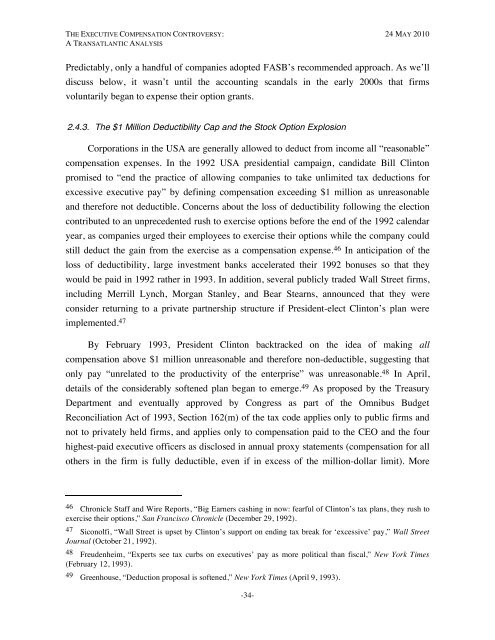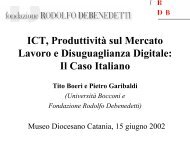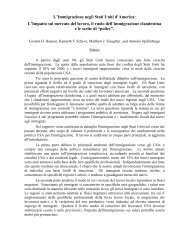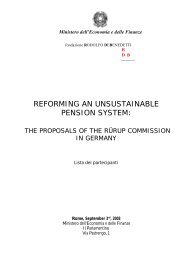The Executive Compensation Controversy - Fondazione Rodolfo ...
The Executive Compensation Controversy - Fondazione Rodolfo ...
The Executive Compensation Controversy - Fondazione Rodolfo ...
You also want an ePaper? Increase the reach of your titles
YUMPU automatically turns print PDFs into web optimized ePapers that Google loves.
THE EXECUTIVE COMPENSATION CONTROVERSY: 24 MAY 2010A TRANSATLANTIC ANALYSISPredictably, only a handful of companies adopted FASB’s recommended approach. As we’lldiscuss below, it wasn’t until the accounting scandals in the early 2000s that firmsvoluntarily began to expense their option grants.2.4.3. <strong>The</strong> $1 Million Deductibility Cap and the Stock Option ExplosionCorporations in the USA are generally allowed to deduct from income all “reasonable”compensation expenses. In the 1992 USA presidential campaign, candidate Bill Clintonpromised to “end the practice of allowing companies to take unlimited tax deductions forexcessive executive pay” by defining compensation exceeding $1 million as unreasonableand therefore not deductible. Concerns about the loss of deductibility following the electioncontributed to an unprecedented rush to exercise options before the end of the 1992 calendaryear, as companies urged their employees to exercise their options while the company couldstill deduct the gain from the exercise as a compensation expense. 46 In anticipation of theloss of deductibility, large investment banks accelerated their 1992 bonuses so that theywould be paid in 1992 rather in 1993. In addition, several publicly traded Wall Street firms,including Merrill Lynch, Morgan Stanley, and Bear Stearns, announced that they wereconsider returning to a private partnership structure if President-elect Clinton’s plan wereimplemented. 47By February 1993, President Clinton backtracked on the idea of making allcompensation above $1 million unreasonable and therefore non-deductible, suggesting thatonly pay “unrelated to the productivity of the enterprise” was unreasonable. 48 In April,details of the considerably softened plan began to emerge. 49 As proposed by the TreasuryDepartment and eventually approved by Congress as part of the Omnibus BudgetReconciliation Act of 1993, Section 162(m) of the tax code applies only to public firms andnot to privately held firms, and applies only to compensation paid to the CEO and the fourhighest-paid executive officers as disclosed in annual proxy statements (compensation for allothers in the firm is fully deductible, even if in excess of the million-dollar limit). More46 Chronicle Staff and Wire Reports, “Big Earners cashing in now: fearful of Clinton’s tax plans, they rush toexercise their options,” San Francisco Chronicle (December 29, 1992).47 Siconolfi, “Wall Street is upset by Clinton’s support on ending tax break for ‘excessive’ pay,” Wall StreetJournal (October 21, 1992).48 Freudenheim, “Experts see tax curbs on executives’ pay as more political than fiscal,” New York Times(February 12, 1993).49 Greenhouse, “Deduction proposal is softened,” New York Times (April 9, 1993).-34-









